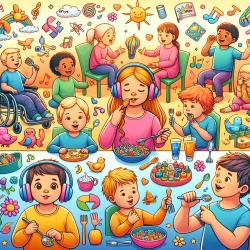Introduction
As a practitioner dedicated to improving child therapy outcomes, understanding the broader context of societal issues can significantly enhance your practice. The "Surveillance for Violent Deaths — National Violent Death Reporting System" report provides a wealth of data that can be leveraged to inform and improve therapeutic interventions for children. This blog explores how insights from this report can be applied to enhance the efficacy of child therapy practices.
Understanding the Data
The National Violent Death Reporting System (NVDRS) collects detailed data on violent deaths, including suicides, homicides, and deaths of undetermined intent. In 2017, the NVDRS reported approximately 67,000 violence-related deaths in the U.S., with significant demographic patterns and circumstances associated with these deaths. For instance, the majority of suicides involved individuals with mental health issues, while homicides were often linked to intimate partner violence.
Implications for Child Therapy
While the NVDRS data primarily focuses on violent deaths, the insights gained can be invaluable for practitioners working with children. Here are some key takeaways:
- Early Identification of Mental Health Issues: The data highlights the critical role of mental health in violent deaths. As a practitioner, emphasizing early identification and intervention for mental health issues in children can prevent escalation into more severe outcomes.
- Addressing Intimate Partner Violence: The report shows a strong link between intimate partner violence and homicides. Therapy sessions can incorporate education and support for children who may be witnessing or experiencing domestic violence, helping to break the cycle of violence.
- Promoting Safe Environments: Creating safe and nurturing environments is essential. Practitioners can advocate for policies and practices that reduce children's exposure to violence, both in the home and community settings.
Encouraging Further Research
The NVDRS data underscores the importance of continued research into the factors contributing to violent deaths. Practitioners are encouraged to engage with this data to identify patterns and develop targeted interventions. Collaborative research efforts can further refine therapeutic approaches and enhance outcomes for children.
Conclusion
By integrating insights from the NVDRS into child therapy practices, practitioners can make data-driven decisions that enhance therapeutic outcomes. Understanding the broader societal issues that impact children's mental health and well-being is crucial in creating effective interventions. To read the original research paper, please follow this link: Surveillance for Violent Deaths — National Violent Death Reporting System, 34 States, Four California Counties, the District of Columbia, and Puerto Rico, 2017.










